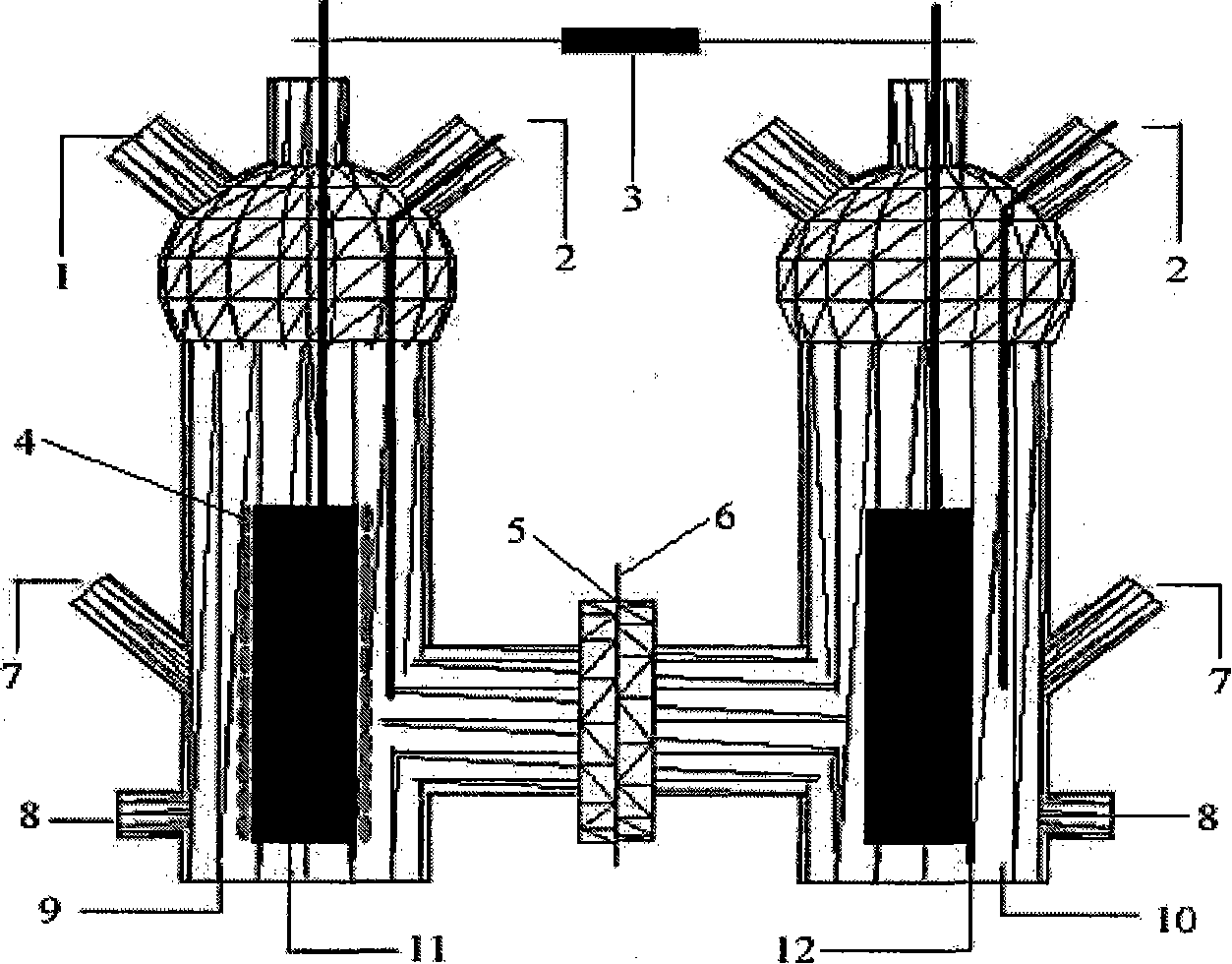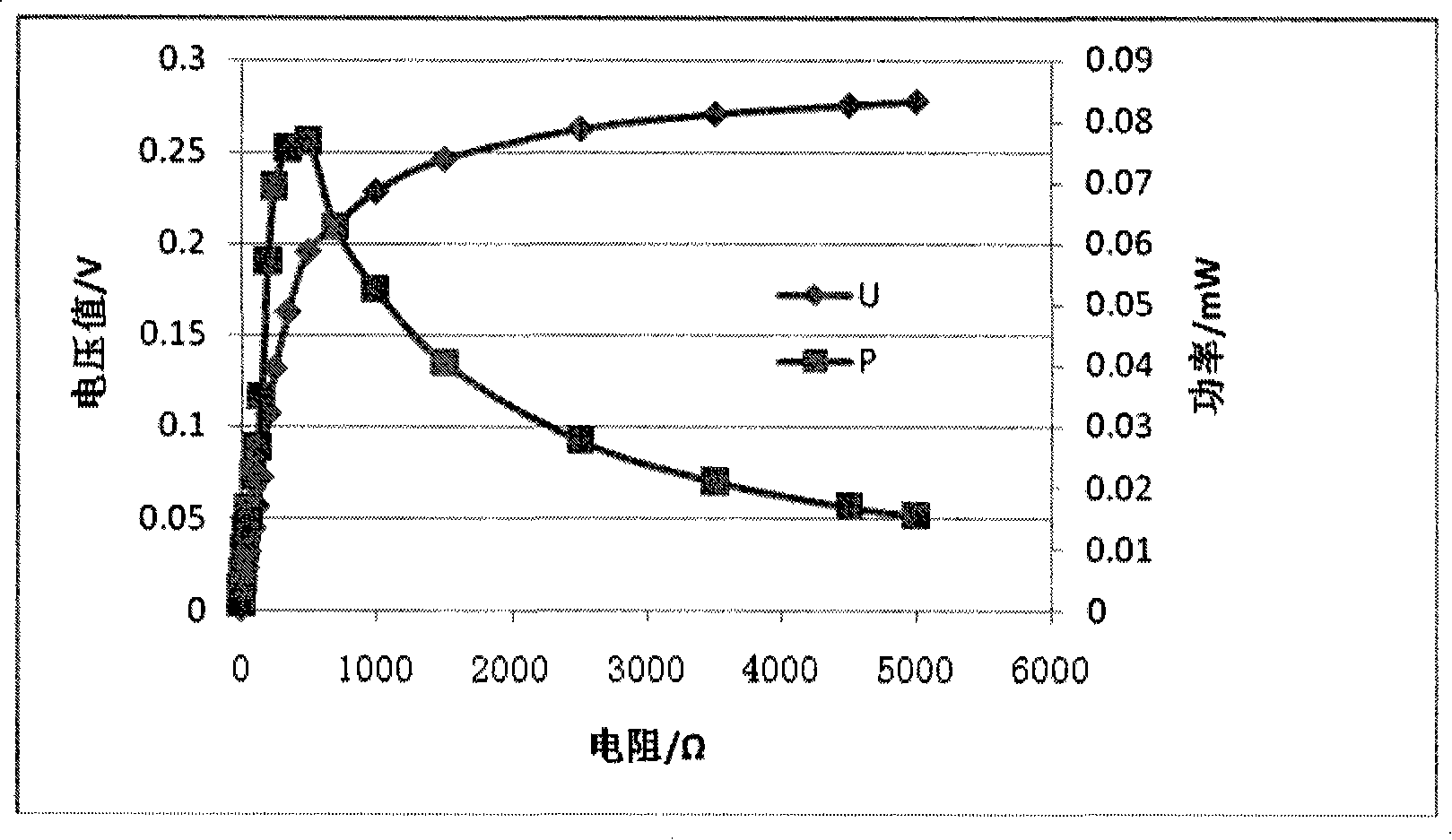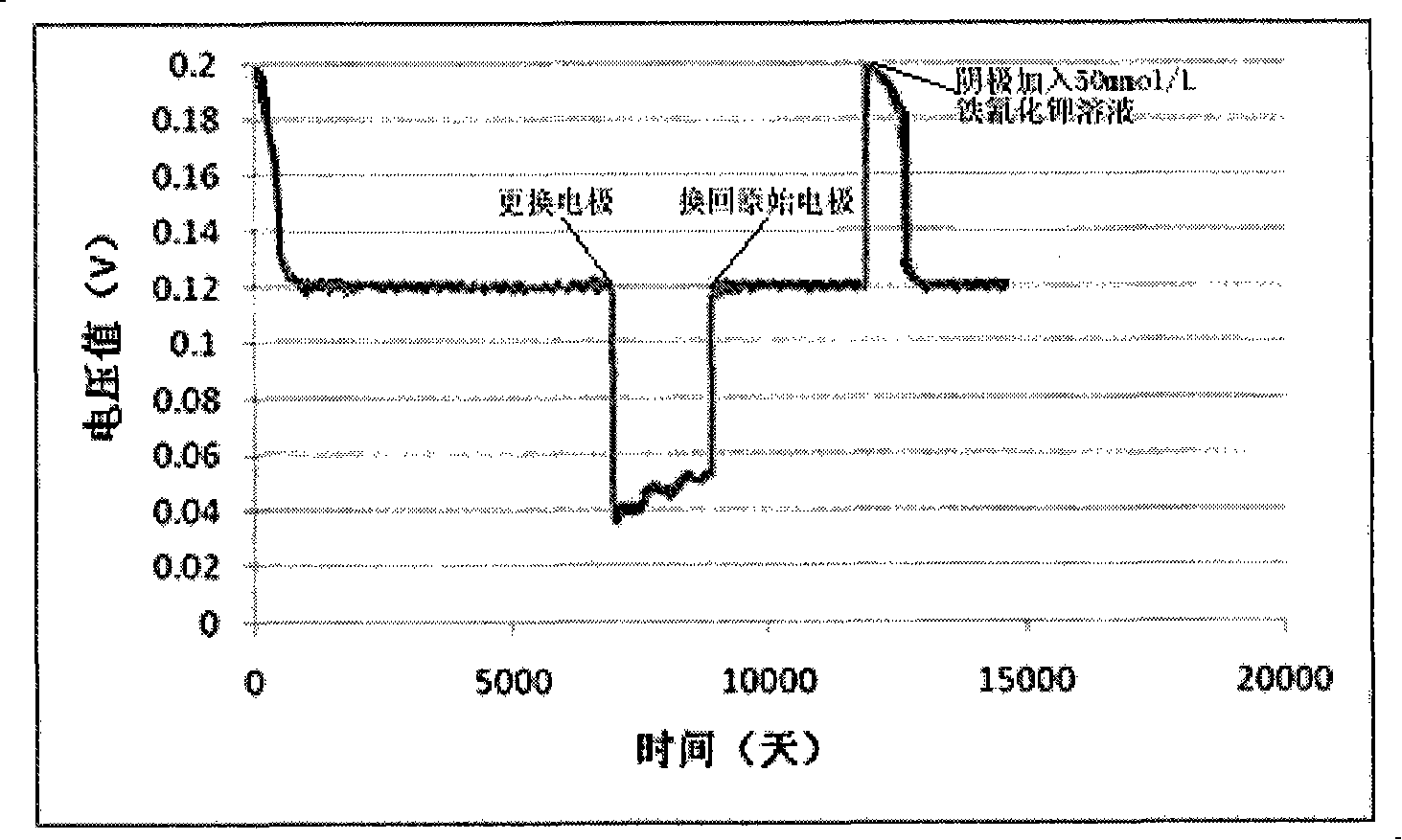Photosynthesis microorganism fuel cell
A photosynthetic microorganism and fuel cell technology, which is applied in biochemical fuel cells, biological water/sewage treatment, water/sludge/sewage treatment, etc. Improves electrical energy and is beneficial to growth and reproduction
- Summary
- Abstract
- Description
- Claims
- Application Information
AI Technical Summary
Problems solved by technology
Method used
Image
Examples
Embodiment 1
[0034] The microorganisms are Chlorella vulgaris, cultured from water samples obtained from the river, and separated by the water droplet separation method. The medium composition (1L) is as follows:
[0035] Table 1 Medium formula table (1L)
[0036]
[0037] Table 2 Medium trace element formula table (1L)
[0038]
[0039] The photosynthetic microbial fuel cell consists of two electrode chambers, the cathode and the anode, which are connected by a proton exchange membrane (Nation-117, Dupont). 1000ml solution, the physical surface area of the anode plate is 75cm 2 , add anode buffer solution (Table 3) and the above-mentioned culture medium to the anode chamber, and add cathode buffer solution (Table 4) and potassium ferricyanide solution to the cathode chamber. All devices were placed in a light incubator for experiments. The growth temperature is 25-30°C, and the light intensity is 4.5×10 3 lx, the load resistance is determined to be 510Ω.
[0040] Table 3 Ano...
Embodiment 2
[0046] Photosynthetic bacteria (photosynthetic bacteria referred to as PSB) were isolated in Xiaoyuehe, Beijing, and the medium used for isolation was: organic matter 1.5-2g, (NH 4 ) 2 SO 4 1g, NaCl 2g, NaCO 3 5g, K 2 HPO 4 0.5g, MgSO 4 ·7H 2 O0.2g, distilled water 1000mL, pH 7.0, culture at 25-30°C under light. The isolated PSB has a Gram-negative reaction and is single-cell egg garden and spherical. The colony is rose red, moist and smooth, and the liquid culture of the bacteria is dark red. The bacterial suspension after liquid culture contains 2.6- 280 million / mL, identified as Rhodobacter sphaeroides, Rhodobacter palustri s, Rhodobacter Capsulatus, Rhodospirillum rubrum and other strains.
[0047] The photosynthetic microbial fuel cell consists of two electrode chambers, the cathode and the anode, which are connected by a proton exchange membrane (Nation-117, Dupont). A vacuum pad is sandwiched between the proton exchange membrane and the bipolar chambers to kee...
Embodiment 3
[0050] The photosynthetic microorganism is Spirulina, using Zarrouk's medium, adding 150mL of culture medium into a 250mL Erlenmeyer flask, and inoculating Spirulina in the logarithmic growth phase. To about 10, THZ-82 constant temperature shaker shaker 30 ℃, 24h d -1 Light shake flask culture.
[0051] The photosynthetic microbial fuel cell consists of two electrode chambers, the cathode and the anode, which are connected by a proton exchange membrane (Nation-117, Dupont). A vacuum pad is sandwiched between the proton exchange membrane and the bipolar chambers to keep it sealed. Each electrode chamber is filled with 1000ml solution. The physical surface area of the anode plate is 120cm 2 , add anode buffer (Table 3) and Zarrouk's medium to the anode chamber, and add cathode buffer (Table 4) to the cathode chamber. All devices were placed in a light incubator for experiments. The growth temperature is 25-30°C, and the light intensity is 4.7×10 3 lx, the load resistance ...
PUM
| Property | Measurement | Unit |
|---|---|---|
| temperature | aaaaa | aaaaa |
| electrical resistance | aaaaa | aaaaa |
| temperature | aaaaa | aaaaa |
Abstract
Description
Claims
Application Information
 Login to View More
Login to View More - R&D
- Intellectual Property
- Life Sciences
- Materials
- Tech Scout
- Unparalleled Data Quality
- Higher Quality Content
- 60% Fewer Hallucinations
Browse by: Latest US Patents, China's latest patents, Technical Efficacy Thesaurus, Application Domain, Technology Topic, Popular Technical Reports.
© 2025 PatSnap. All rights reserved.Legal|Privacy policy|Modern Slavery Act Transparency Statement|Sitemap|About US| Contact US: help@patsnap.com



